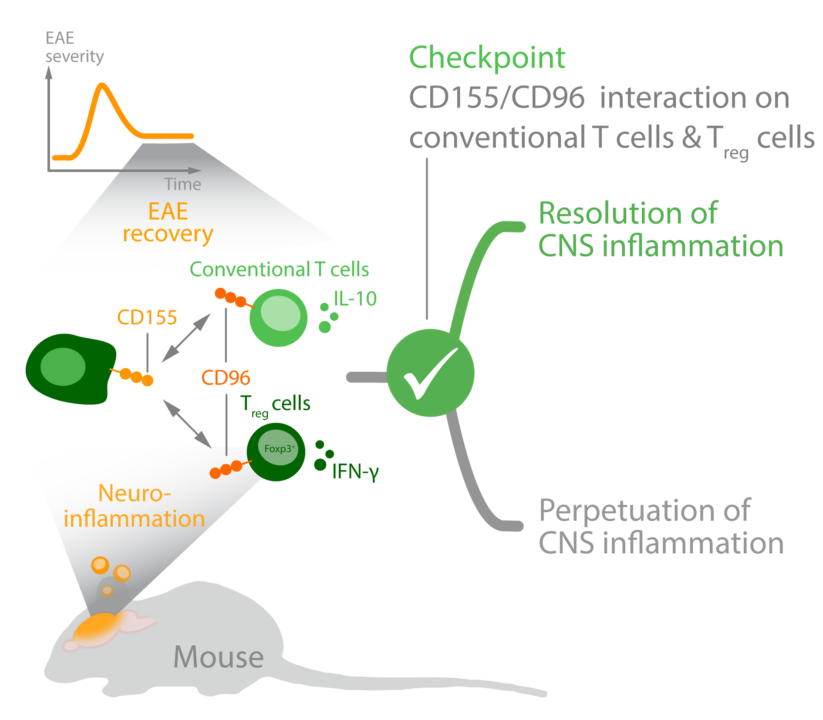Summary
Compartmentalized inflammatory processes within the CNS might be a driver of tissue damage in chronic stages of CNS autoimmunity. Tissue resident T cells constitute a sizeable population of immune cells in the chronically inflamed CNS. However, little is known about their functional integration into CNS tissue niches. Here, we have identified the co-inhibitory molecule CD96 to be expressed on a subset of CNS resident conventional and regulatory T cells. Using genetic tools, we aim to investigate the interaction of CD96 with its CNS-expressed ligands and interrogate its function as a checkpoint to control perpetuation vs resolution of CNS resident T cell populations in the chronically inflamed CNS.






